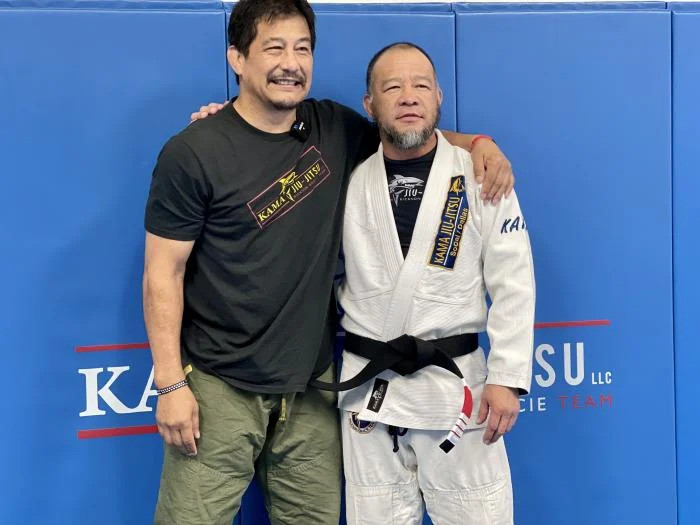Time Management
Once you start your jiu-jitsu journey, it is an endeavor that you can continue for the rest of your life. It doesn’t matter if you begin at age 6 or age 60. Anyone can start taking jiu-jitsu classes and anyone can improve with practice.
As Ryan Young of Kama Jiu-Jitsu explores in the below video, not all progress is the same, however. As our bodies age, we lose flexibility and strength. We may struggle to move as fluidly as we once did, our reflexes slow, and we become more prone to injury. It’s not solely our bodies that change. Our minds do, as well, and it grows more and more difficult to learn new skills as you get older. It doesn’t matter if it’s language, an instrument, or a martial art.
Consequently, if one person starts taking jiu-jitsu classes at the age of 18, and another person starts taking classes at the age of 75, they are not going to move up the belt system at the same pace. Even in less extreme cases, say with someone who is 25 and another person who is 40, they are unlikely to have the same jiu-jitsu experience, though both will learn how to effectively defend themselves. It’s simply way less likely that the older person will be able to achieve both the skill level and level of physical performance necessary to compete at the highest levels.
This does not mean that you can’t obtain a black belt. It just means that you may need to take a different approach.
Managing Time
For those who start jiu-jitsu later in life, they may feel like they are in a race against time to get their black belt. Such an ambitious approach is not always realistic, according to Ryan.
As you get older you tend to have more commitments and responsibilities. It could be because of your job. It could be because of your family. Either way, you have more things that you have to do that are not related to jiu-jitsu. For a person who is fresh out of high school and working a job that has no responsibilities once they’re off the clock, the situation is radically different. They can focus on training for eight hours per day. You may only be able to do so for three or four.
Another issue is injury. Trying to train like a 23-year-old when you’re 40 years old is hard on the body, especially if you are not accustomed to pushing yourself physically. It will eventually catch up with you, making it difficult to train consistently.
Focusing on Fundamentals
Another change of strategy is to spend less time learning the good-to-know moves of jiu-jitsu and really focusing almost exclusively on the need-to-know fundamentals. “If you’re given limited time, it is best spent on those concepts that will make the biggest impact on your training,” Ryan says.
As Ryan explains, it takes time to learn any move in jiu-jitsu. It takes time to practice all the steps, to internalize them, and to commit them to muscle memory. If it takes all that time to learn just the basics of how to do simple moves like an armbar or a cross collar choke, how long do you think it’s going to take to learn the nuances and steps of more obscure and difficult techniques? Moreover, you should ask yourself, “How useful is this going to be in a real-world fight scenario or a tournament?”
Rather than concentrating on moves that will not be used very often or different takes on fundamental concepts, Ryan recommends learning one way to execute a jiu-jitsu fundamental, and then dedicating time to learning every possible variation you may go up against and refining your technique. Instead of knowing twenty ways to pass guard pretty well, you become an expert in one way and learn how to modify it for any scenario.

Focusing on Micromovements
According to Ryan, Rickson Gracie stupefied a lot of people who watched him in action. This was true even during demonstrations, where Rickson would ask the biggest guy in the room to lock him into a rear naked choke. In just a few seconds, he would escape it. Dumbfounded, those in attendance would ask, “What is he not showing us? What is the secret?”
For Ryan, this is the wrong question to ask. The right questions to ask are, How many times has he done this and failed at it? How has he modified it to correct that failure?
This introduces the concept of micromovements, which are slight variations that one makes between steps to frustrate an opponent’s offense or to advance one’s attack. “At the white belt level, I teach you steps one through ten,” Ryan says. “A blue belt will have to learn the half steps…and the blue belt will catch the white belt in the half steps that the white belt hasn’t learned yet.”
He continues, noting that purple belts will learn the quarter steps, brown belts learn the eighth steps, and black belts know the sixteenth steps. In other words, a white belt believes there are 10 steps in one move, a black belt sees 160. Rickson understood these movements on an even more granular level, to the point that each step might have 64 or even 128 micromovements. These subtle movements were his secret. They were also so small that they were imperceptible even to fellow black belts.
If you can understand just a few of the fundamentals of jiu-jitsu on this deep a level, you will not only make the best use of limited time; you will also become an example of how perfected technique is the most effective weapon in martial arts.

